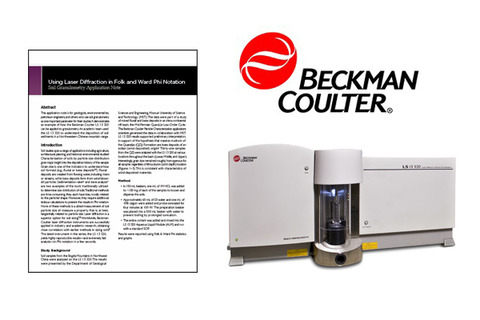
Beckman Coulter have produced an application note reporting on how soil scientists are using their LS 13 320 MW to investigate mixed fluvial and loess soil deposits in an intra-continental rift basin in China.
A proper understanding of soil make-up and structure is critical to a number of fields, including architectural planning, historical environmental studies and, of course, agriculture. Granulometry, the measurement of the size distribution in a collection of particles, is an important method for analysing soils that can provide great insight into the deposition history of a soil sample. Grain size being one of the major indicators of how a soil, such as a loess or fluvial deposit, was formed.
Traditionally methods such as sieve analysis and sedimentation rate have been used for soil grain sizing, but laser diffraction now offers a superior option, being both faster and offering less bias. The Beckman Coulter LS 13 320 MW laser diffraction instrument is an excellent option for soil analysis as it offers excellent resolution, accuracy and reproducibility. State-of-the-art technology permits particle analysis without the risk of missing either the very largest or the very smallest soil particles. Plus the LS 13 320 can present results in Phi notation. The Folk-Ward Phi notation being an easy-to-read graphical representation of naturally occurring sediment-size distributions that is standard in sedimentology literature.
This application note involving the Beckman Coulter LS 13 320 laser diffraction particle size analyser will be of great interest to geologists, architects, petroleum engineers, environmentalists and all others who require a proper appreciation of soil granulometry as part of their work.
To download the application just click on the link below.







